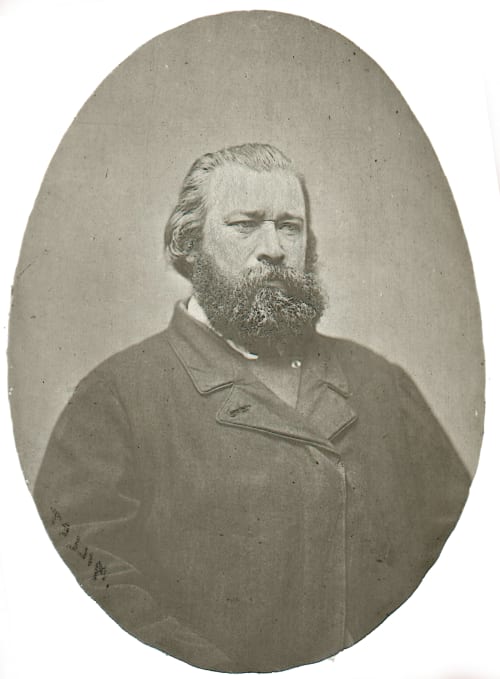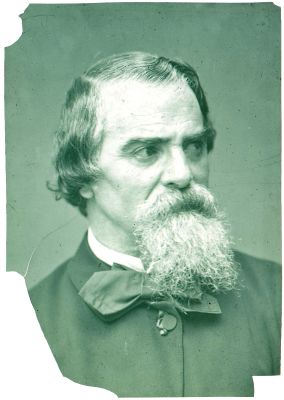
Title
Jean-François MilletPublication
Galerie Contemporaine 1878, series 2Date
1878 caProcess
Woodburytype, gelatin matrixImage Size
10 x 7.8 cm
A Woodburytype is both a printing process and the print that it produces. In technical terms, the process is a photomechanical rather than a photographic one, because sensitivity to light plays no role in the actual printing. The process produces very high quality continuous tone images in monochrome, with surfaces that show a slight relief effect. Essentially, a Woodburytype is a mold produced copy of an original photographic negative with a tonal range similar to a Carbon print.
A dichromate-sensitized sheet of gelatin is exposed to UV-rich light through a photographic negative, causing each area of the gelatin to harden to a depth proportional to the amount of exposure. It is then soaked in warm water to dissolve the unhardened portion of the gelatin. The resulting relief image is pressed into a thick sheet of lead under about 5000 pounds per square inch of pressure. This creates an intaglio metal printing plate, which is used as a mold. It is filled with liquid pigmented gelatin and a sheet of paper is then pressed down onto it, squeezing out the excess gelatin and attaching the remainder to the paper. After the gelatin has set sufficiently, the print is stripped from the mold, trimmed, and usually mounted onto a larger sheet or card
The process was introduced by the English photographer Walter B. Woodbury and was in use during the final third of the 19th century, most commonly for illustrating fine books with photographic portraits. It was ultimately displaced by halftone processes that produced prints of lower quality but were much cheaper. [1]
From the collection of Charles Nègre.
References
[1] Patrick Montgomery www.flickr.com/photos/photohistorytimeline/51911390177/

